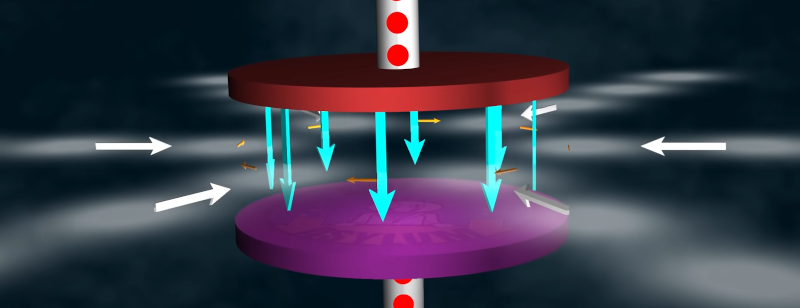If you are like [The Science Asylum], you might wonder how a capacitor can work since, at their core, they are nothing more than a gap filled with air or another insulator. He explains how in a recent video you can see below.
Of course, at DC, a capacitor doesn’t conduct any better than the insulator used as its dielectric. However, a DC voltage has to start sometime and when it does, it briefly looks like AC. The video explains it all in simple terms. Of course, if you are math savvy, you can probably get as much out of the normal C=dQ/dV equation.
If that doesn’t speak to you, the explanation in the video about charges will shed some light. He even shows an animation of the classic “hydraulic model”, which is helpful to develop intuition about the process.
We often don’t think about the details of how charge, voltage, current, and energy all relate, but as [The Science Asylum] points out, he is a theoretical physicist and not an engineer. So he dives into the actual explanation that isn’t what we usually think of when we design with capacitors, because we are usually just interested in practical results. Still good to know, though.
While most real capacitors don’t look like open-air gaps, some do and you can even make them. You can also just twist together some wires.
















How do capacitors work?
Fine, usually.
B^)
How exactly does the sun set?
How exactly does the posi-trac rear end on a Plymouth work!?
It just does.
Positraction? Ask Marisa Tomei (My Cousin Vinny, 1992). Great movie.
https://youtu.be/CFdJza0AbeA
Why should I care anymore when 100nF caps that used to cost $0.02 / piece now cost $0.30 / piece and have >10 weeks lead time. At least being a Java code monkey still puts food on the table.
Next up: How do magnets work?
Related: Question to Uncle: “How does a compass work?”
Answer from cruel Uncle: “How about you take it apart and find out?”
believe the video is/was/will help to answer some questions pondered by individuals after his[science asylum] video on “Circuit Energy doesn’t FLOW the way you THINK!” https://www.youtube.com/watch?v=C7tQJ42nGno
a video in which the nature to ask questions was re-kindled with questions after veritasium video on energy flow. Good shit, great article.